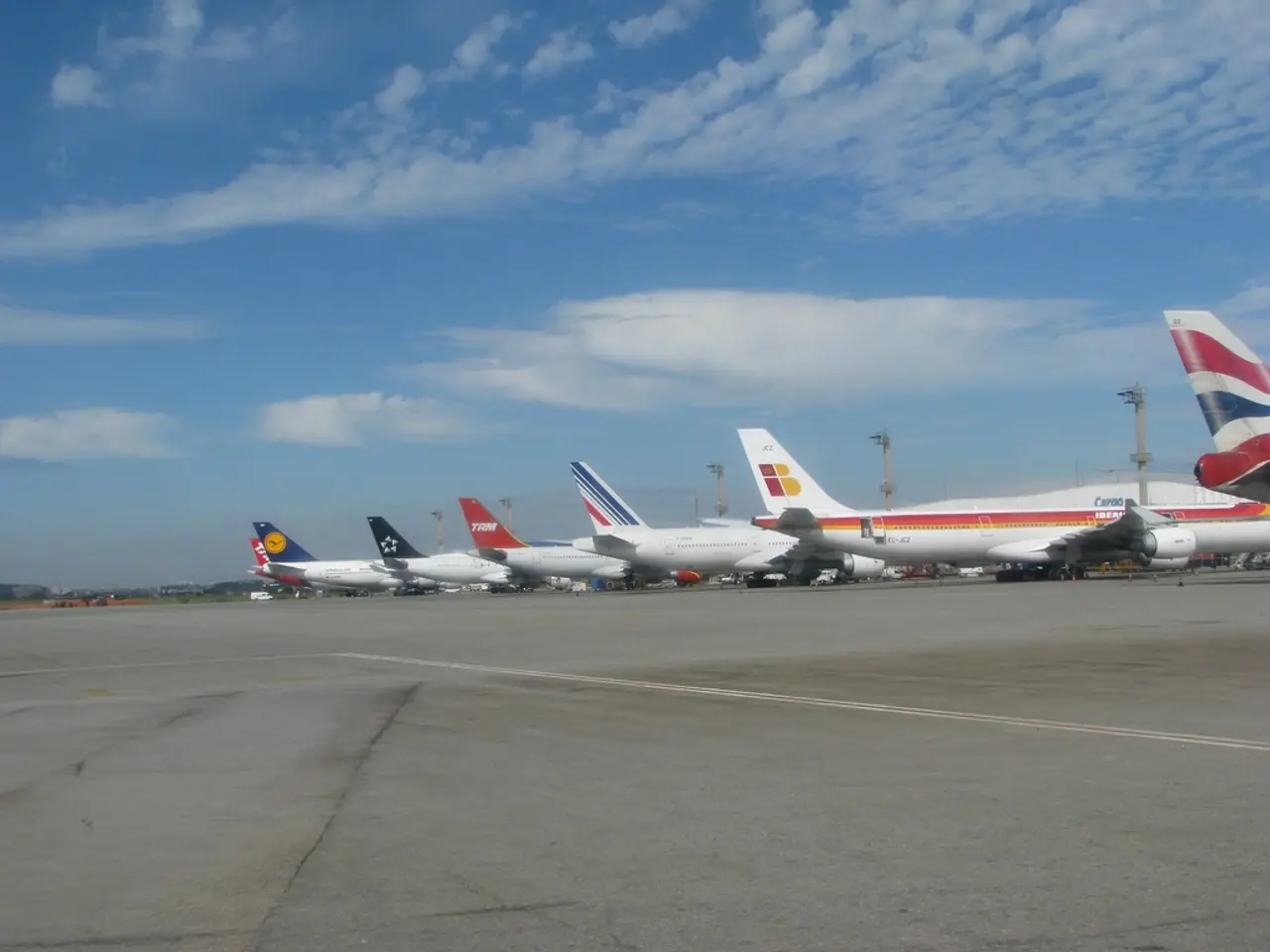Heathrow Shutdown's Quantifiable Effects Revealed
In the early hours of March 21, 2025, London's Heathrow Airport was unexpectedly closed due to a fire at the North Hyde electrical substation. The incident, caused by a known but unmitigated fault dating back to 2018, resulted in a major power outage that forced the airport to shut down for most of the day. Over 1,300 flights and approximately 300,000 passengers were disrupted, highlighting the severe operational and passenger impact of infrastructure failures.
Airports such as London Gatwick received additional aircraft and passengers due to the diversion of flights from Heathrow, adding almost an extra 2,000 passengers. Aircraft like Airbus A380s, Boeing 787-10 Dreamliners, Boeing 787-9 Dreamliners, Boeing 777-200, and Boeing 777-300ER were diverted to London Gatwick.
Heathrow's rapid response teams and emergency services were praised for their swift action in mitigating further disruptions. Critical systems, including air traffic control, baggage handling, and security screening, were brought back online in a phased approach. The British Airways A350-1000 was the first aircraft to touch down on runway 09L at Heathrow after power restoration.
The aviation industry globally has taken note of the vulnerabilities exposed by this outage. There has been increased focus on ensuring airports have multiple independent power feeds, better coordination with energy providers, and updated emergency plans that incorporate rapid reconfiguration and backup power capabilities.
Reports stress that energy network operators traditionally lack visibility into whether their customers are designated Critical National Infrastructure (CNI), a gap revealed by this event. This has spurred global discussions on improving communication and coordination between energy providers and critical infrastructure users like airports to prevent future incidents.
Leadership and crisis management practices at airports have been scrutinized. The Heathrow CEO missed multiple emergency alerts during the event, prompting reviews and reforms in emergency communication protocols, leadership readiness, and organizational resilience across airports worldwide.
The incident has also accelerated regulatory and operational changes in aviation and energy sectors to enhance disaster preparedness, infrastructure maintenance, and risk mitigation concerning power supply systems critical to airport operations.
Before the power outage, Heathrow was Europe's largest airport, with over 83.9 million passengers traveling through it in 2024. The long-term effects of the outage on the aviation industry and airports globally include heightened awareness and action on infrastructure resilience, critical infrastructure energy supply management, and crisis response improvements.
The fire at the North Hyde electrical substation is currently under investigation to prevent future occurrences. The incident serves as a pivotal case study that reshapes how airports and aviation networks globally approach power infrastructure resilience, emergency response, and coordination with energy providers to safeguard against similar large-scale disruptions. It leads to concrete reforms aimed at strengthening airport critical infrastructure protection and operational continuity worldwide.
The unexpected closure of London's Heathrow Airport, due to an unmitigated fault at the North Hyde electrical substation, has led to increased focus within the aviation industry on the necessity of multiple independent power feeds, better coordination with energy providers, and updated emergency plans. This incident has also highlighted the importance of crystal clear communication and leadership readiness during crisis situations, as evidenced by reviews and reforms in emergency protocols worldwide. The financial impact of this disruption, affecting over 300,000 passengers, underscores the importance of robust transportation infrastructure in the finance sector of the transportation and airline news industries.






